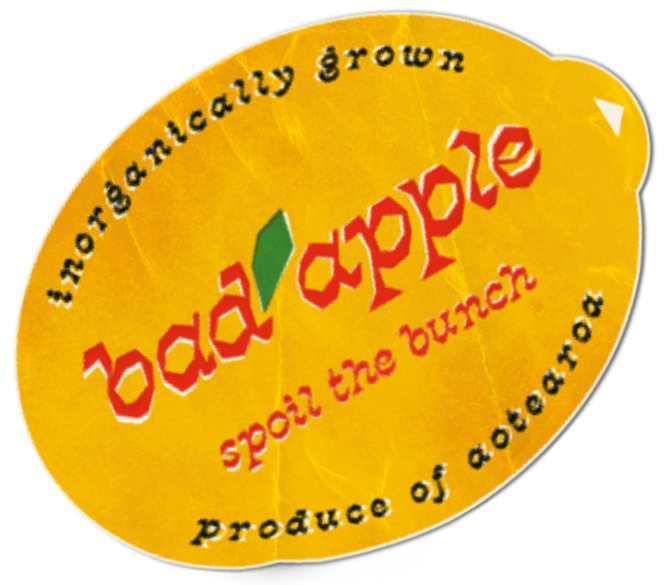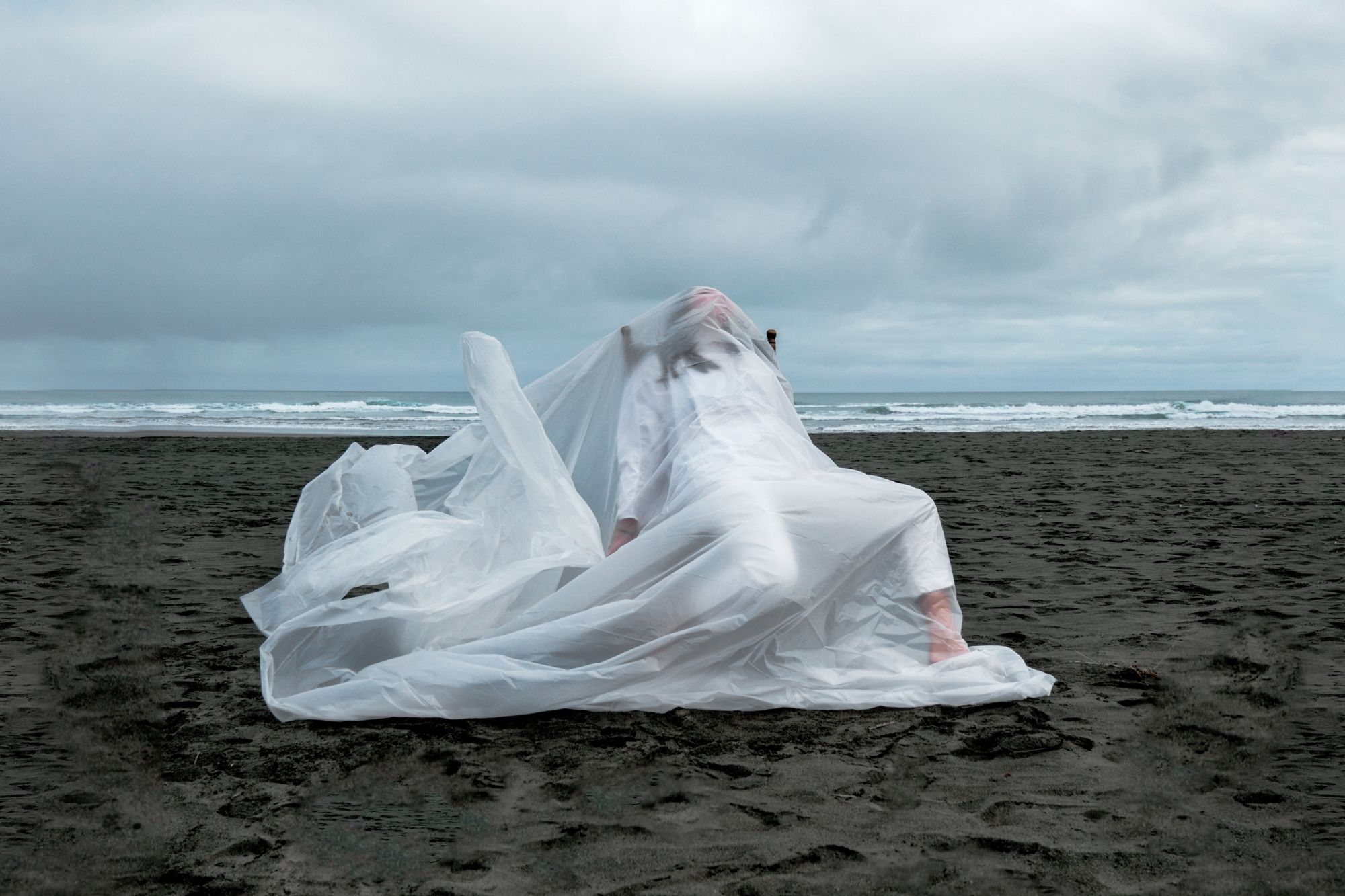Spoilers ahead! This review will discuss elements of the show that could be considered spoilers. You have been warned.
I don’t fully understand what’s happening, but I’m not sure that’s a problem.
Evie Logan, Emma Broad and Lulu Qui are on a darkly lit stage, draped in semi-sheer plastic sheets, enacting the first full-length solo choreographic work by Deborah Fletcher. Following a successful run at Auckland’s Basement Theatre, after beginning its life as a COVID-19 lockdown dance video project, Our Jurisdiction runs an effective 50 minutes as a part of the Dunedin Fringe Festival.
The programme tells us we are about to “move through spaces of physical reality and psychological stipulations.” I’m not too sure what that means, but it sounds buzzy, and I like buzzy shit. I also like the conceptual seeds that seem to grow (connection and disconnection being inextricable parts of the same dance). The nebulous description isn’t particularly helpful for navigating an understanding of the piece (I would have loved to experience this show with more concrete pre-show framing from the programme copy), but it does scaffold the hazy and dream-like nature of the performance.
The cyclic relationship between connection and disconnection feels like the heart of the work. The dancers barely touch for most of the performance. They are separated by gauzy plastic sheeting, and usually, scant inches of space. They alternate sharing the spotlight, seeming to perform in their own worlds, only to finally, intermittently, satisfyingly touch. This is the strongest throughline. It is delightful and intensely human to experience the joy of watching people touch, connect, after seeing it denied.
The soundtrack, curated by Deborah Fletcher, was stellar and provided many highlights. There was excellent use of silence, as well as darkness and space, reinforcing the dichotomous narrative. The music shifted from bass-heavy dance tracks (hello, rave flashbacks) to a jazzy and free-flowing end piece. This was an especially effective method of communication and helped the piece maintain its forward momentum, as well as providing a useful footing for the audience. The recurrent rustle of plastic, amplified by the regular silence in the soundtrack, provided a crisp aural narrative.
“Where this piece shone was its use of juxtaposition. Softness and silence, hard moves and pulsing beats. Connection and disconnection, plastic and skin, darkness and light.”
The costumes were also excellent, curated by Deborah Fletcher with Lulu Qiu and Evanda Pitovao. The stark staging and almost complete lack of props (although I loved the inclusion of Duplo partway through) allowed the costumes to take centre stage and provided arresting visuals, while also being a useful framing device. In addition to the ever-present plastic sheeting, our performers wore simple cotton dresses which were, at one point, effectively discarded to reveal cotton bloomers and a singlet, and then re-donned later in the piece. This feels like a metaphor about gender but, as a 34-year-old agender person, I’m a little over metaphors about gender, so I let it pass me by. Thinking back on it now, it may have been gesturing at gender categories as a mode of disconnection, which is something I can get behind depending on the context.
The venue was unfortunately too small for the piece and when I turned up there were (because of a remarkably full audience, which we love!) only seats with an obscured view left. This made it difficult to follow as the performers’ bodies were their main mode of communication and I often couldn’t see them. Evie Logan, Emma Broad and Lulu Qui did remarkably and gave committed performances that drove the piece forward and opened up the pathway for emotional connection from the audience. The way they were able to maintain the energy of the piece throughout its many silent moments was particularly effective.
Where this piece shone was its use of juxtaposition. Softness and silence, hard moves and pulsing beats. Connection and disconnection, plastic and skin, darkness and light. The choreography moved through a variety of styles, balancing angular ankles and pointed feet. The set design, by Eleanor Fletcher, supported this through its use of black and white, sheer and opaque fabrics and empty space.
Fringe Festivals are an important and fertile ground for the development of artistic practice. This show was a wonderful introduction to not only the choreographic world of Deborah Fletcher but also the performative capabilities of Evie Logan, Emma Broad and Lulu Qui. I’m grateful to have witnessed it and excited for a future in which we get to see much more from all of these artists.
Featured photo courtesy of Deborah Fletcher and Dunedin Fringe Festival.



